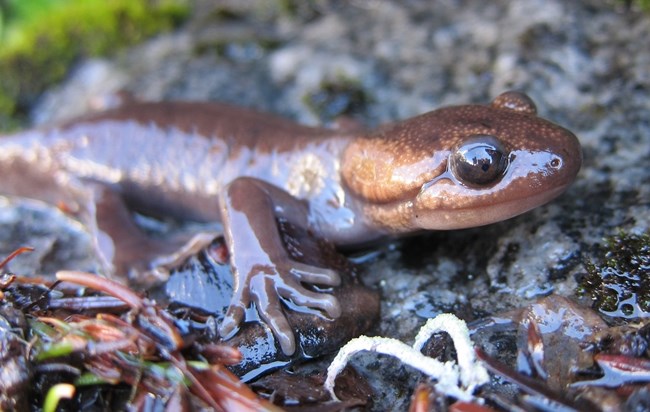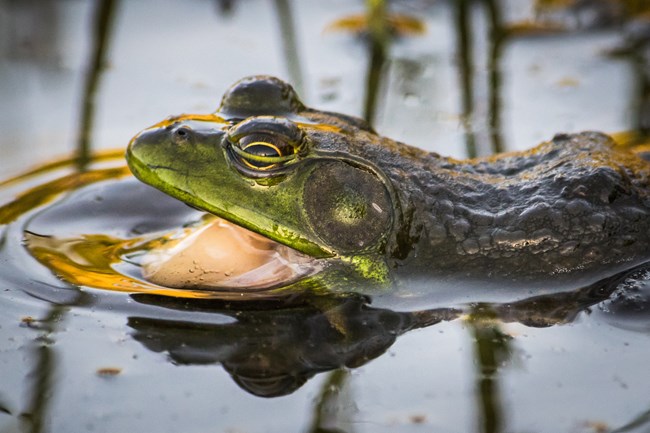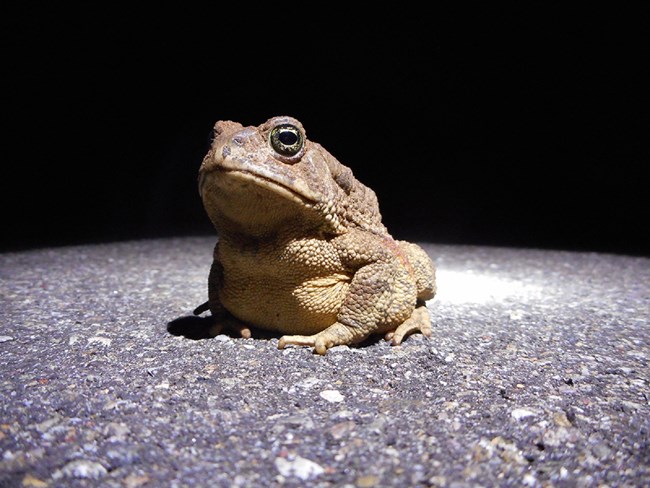Help Amphibians Where You Live
Amphibians are nature’s canary-in-the-coal-mine. They are sensitive to changes in their environments, often showing early signs of stressors. Therefore, the health of amphibians can help indicate the health of ecosystems.
About one third of all amphibian species are in danger of extinction. Many animals rely on amphibians for food, so amphibian population declines can affect the entire ecosystem. Some of the threats amphibians face include disease, invasive species, climate change, drought, loss of wetlands, and habitat fragmentation. The good news is you can help amphibians right in your own backyard.
Here are some ways you can help:

NPS / S. Anderson
Look, but don’t touch!
Amphibians breathe through their skin and can easily absorb your salts, oils, and lotions.
Don’t move rocks, build dams, or channelize riverbeds.
Amphibians live and lay their eggs under rocks in streambeds. Disturbing rocks can harm amphibians and their eggs.
Protect your watershed.
Water in our watersheds is all connected. What you do in your backyard affects areas far downstream. Follow these simple tips to help protect clean water in your community.

NPS
Create amphibian-friendly habitat in your backyard.
- Landscape naturally. Use native plants and protect natural water sources and wetlands. Allow for ample vegetation around wetlands and shorelines on your property.
-
Provide a water source. Don’t have a water source? Create an amphibian friendly pond in your backyard.
- Create cover. Amphibians need shady, protected places to thrive. Include natural cover in your landscaping or create a “toad abode” in your garden.
- Never introduce non-native amphibians into your backyard. Non-native species can disrupt the natural ecosystem and be harmful to native wildlife. Find out what you can do to help stop the spread of invasive species.

NPS / Joshua Petersen
- Keep an eye on pets. Dogs and cats can eat or harm amphibians, some of which can be poisonous to pets.
- Leave the leaves. Skip the fall clean-up to provide habitat and nesting materials for wildlife, including amphibians. This also helps pollinators too!
- Keep it covered. Prevent amphibians from becoming trapped or drowned in your swimming pool by covering your pool when it is not in use.
-
Save the spray. Avoid or reduce your use of pesticides and fertilizers. Amphibians are natural pest eaters, so they can help your garden thrive.
connected conservation
Conservation at HomeLast updated: May 9, 2023
